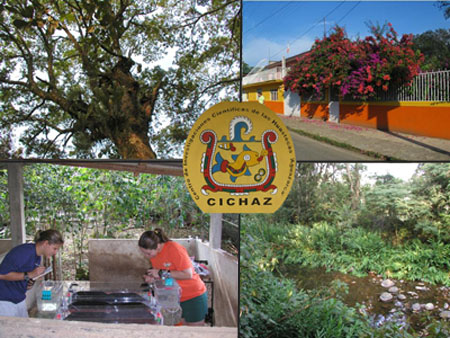 The California Floristic Province, the Baja, Sonoran, and Chihuahuan desert complex, and the high elevation pine-oak woodlands all have exceptional biotic diversity and conservation importance, making the borderlands between the United States and Mexico an area of increasing concern to conservationists (Dinerstein et al., 1995; Mittermeier et al., 2002). The largest conservation area in the region, the Big Bend-Carmen Conservation Corredor, includes over 1.5 million hectares spread among 12 protected areas, six on each side of the border. Other major parks and protected areas also occur outside of the corridor.
The California Floristic Province, the Baja, Sonoran, and Chihuahuan desert complex, and the high elevation pine-oak woodlands all have exceptional biotic diversity and conservation importance, making the borderlands between the United States and Mexico an area of increasing concern to conservationists (Dinerstein et al., 1995; Mittermeier et al., 2002). The largest conservation area in the region, the Big Bend-Carmen Conservation Corredor, includes over 1.5 million hectares spread among 12 protected areas, six on each side of the border. Other major parks and protected areas also occur outside of the corridor.
The region’s rich cultural history and biodiversity lies in an area of massive economic, political and social transformation. Beginning with Mexico’s industrialization-led economic development of the 1960s, the region has become a magnet for rural labor, resulting in considerable urbanization near key border areas. Since 1990, the Lower Rio Grande/Bravo Valley of South Texas and Northern Mexico has moved from an agricultural economy toward a service, industry- and trade-oriented economy. The combination of rapid demographic change, urbanization, and economic restructuring have altered the entire region’s environment.
Changes in the annual fire regimes, either by suppression or excessive burning, are also impacting natural habitats. Fire suppression has transformed native Ponderosa pine savanna forests into closed mixed conifer stands. In the high elevation forests the major threat is legal and illegal logging. Between 50 and 67% of these forest are gone and the remainder altered. Several species are extinct locally (Mexican wolf, Mexican grizzly bear), or globally (Imperial woodpecker).
In sum, the U.S. borderland is an area of high cultural and biological diversity, coupled with great disparities in wealth, technology, and capital. Complex political, environmental and social problems are impinging upon ecosystem functions that affect agriculture, wildlife, water quality, and human livelihoods. These challenges represent opportunities for ABS faculty and students to conduct research that has great intellectual merit as well as numerous practical applications.
View Transboundary Photo Album
Literature Cited:
Dinerstein, E., D.M. Olsen, D.J. Graham, A.L. Webster, S.A. Primm, M.P. Bookbinder, and G. Ledec. 1995. A Conservation Assessment of the Terrestrial Ecoregions of Latin America and the Caribbean. The World Bank, Washington, DC.
Mittermeier, C., G. Ceballos, E. Ezcurra, R. Schmidt, H. Hernandez, B. Goettsch, W.R. Konstant, P.Robles Gil, and E. Pallares. 2002. The Greater Chihuahuan Desert. Pp. 174-181, In: Wilderness, Earth’s Last Wild Places. R.A. Mittermeier, C.G. Mittermeier, P. Robles Gil, J. Pilgrim, G.A.B. da Fonseca, T. Brooks, and W.R. Konstant (eds.). CEMEX (Monterrey), Conservation International (Washington, DC), and Agrupación Sierra Madre (Mexico City), 576 pp.

